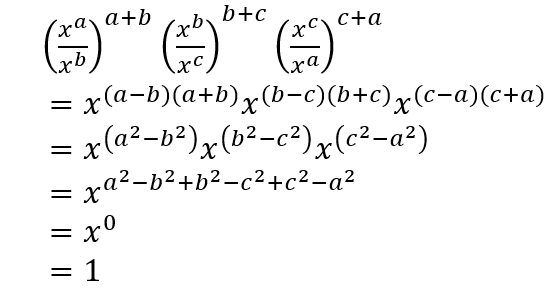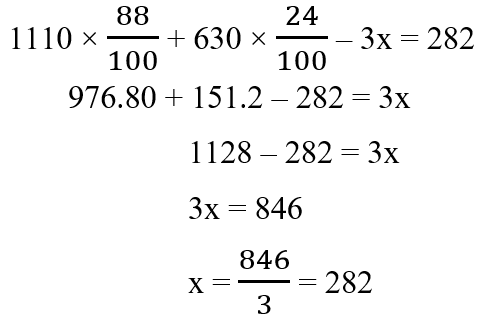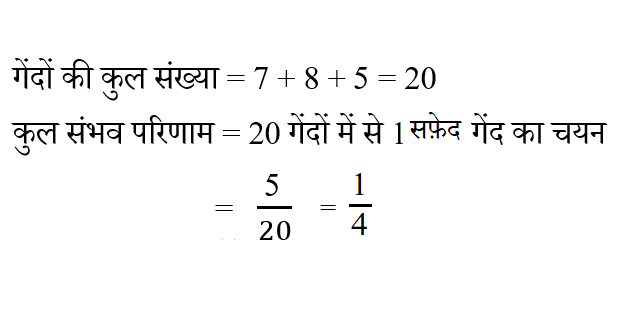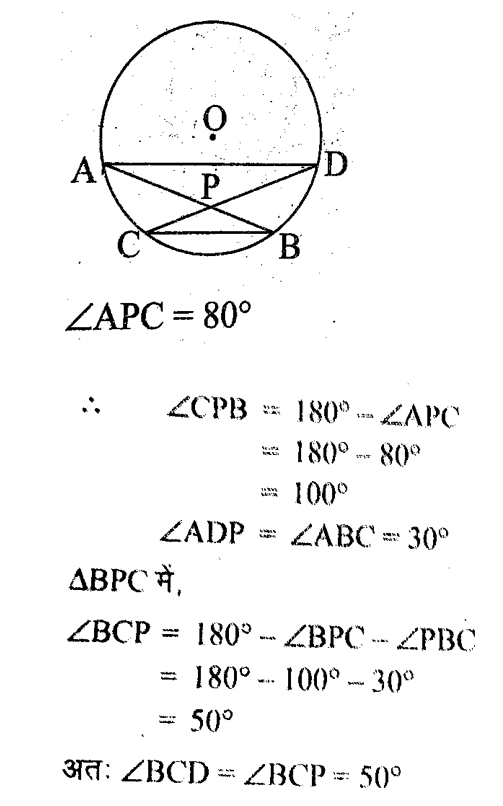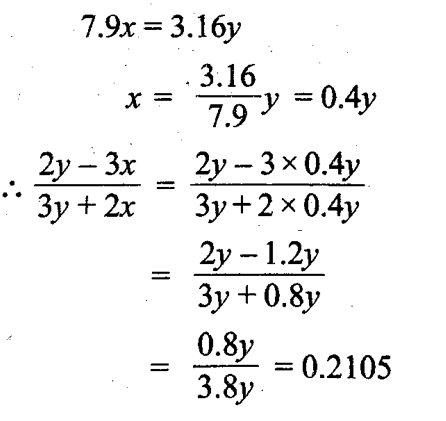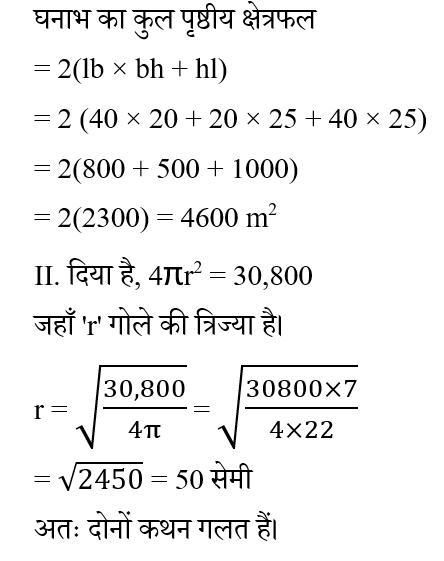Question 1: 
Question 2:
A is the smallest three-digit number which when divided by 8 and 12 gives remainders 6 and 10 respectively. B is the largest two-digit number which is divisible by both 7 and 8. What is the value of A + B?
A तीन अंकों की ऐसी सबसे छोटी संख्या है जो 8 तथा 12 से विभाजित करने पर शेषफल क्रमश: 6 तथा 10 देती है। B दो अंकों की वह सबसे बड़ी संख्या है जो 7 तथा 8 दोनों से विभाज्य है। A + B का मान क्या है ?
Question 3:
If 88% of 1110 + 24% of 630 – 3x = 282, then the value of x will be-
यदि 1110 का 88% + 630 का 24% – 3x = 282 हो, तब x का मान होगा-
Question 4: 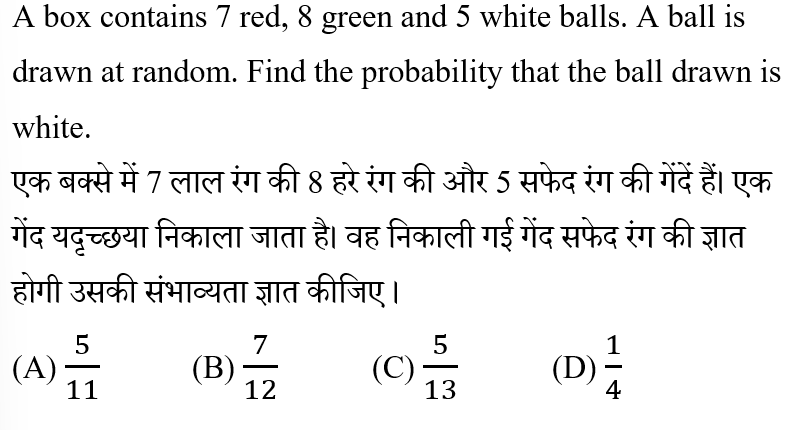
Question 5: 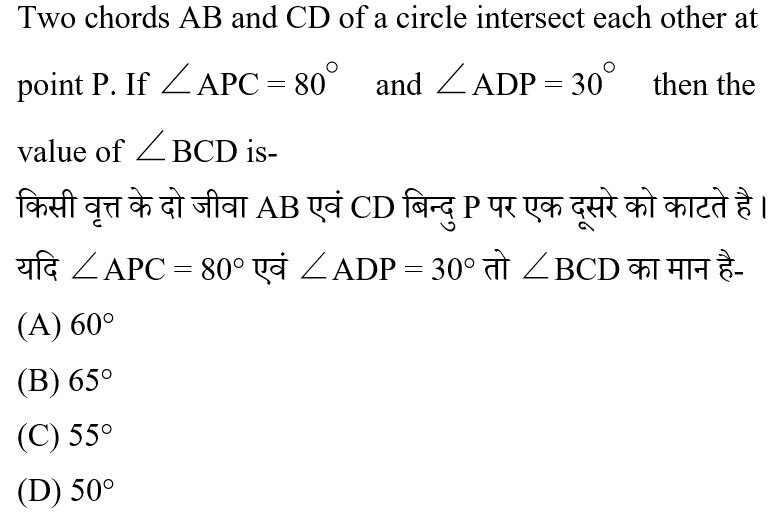
Question 6: 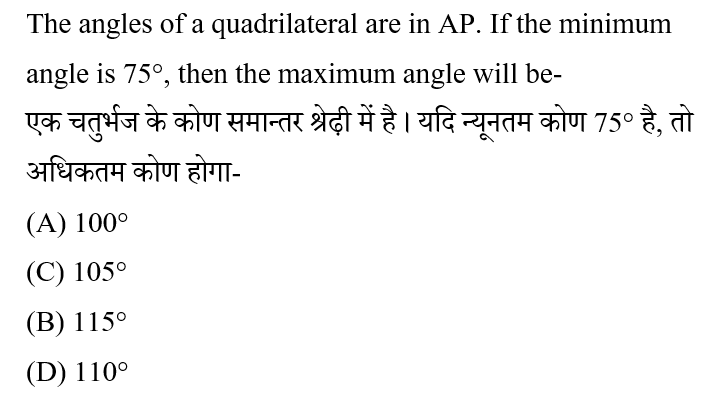
Question 7:
A man left 1/7 of his property in the name of his daughter and divided the rest equally among his sons. If the share of each son is double that of the daughter, then find the number of sons.
एक व्यक्ति ने अपनी संपत्ति का 1/7 अपनी बेटी के नाम और बाकी का भाग अपने पुत्रों में बराबर बाँट दिया। यदि प्रत्येक पुत्र का हिस्सा पुत्री से
दोगुना है तो पुत्रों की संख्या ज्ञात करें।
Question 8: 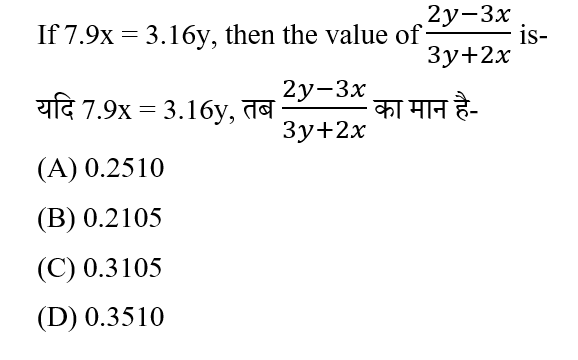
Question 9: 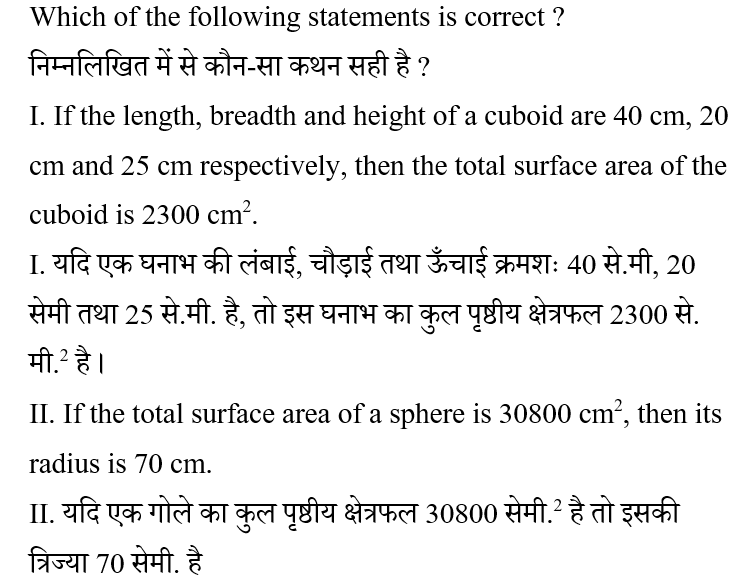
Question 10:
The length and breadth of a rectangular field are 100 m and 66 m respectively. The radius and length (height) of a cylindrical roller are 0.7 m and 1.5 m respectively. How many rounds will this roller have to make to level this field?
एक आयताकार मैदान की लंबाई एवं चौड़ाई क्रमशः 100 मीटर एवं 66 मीटर है। एक बेलनाकार रॉलर की त्रिज्या एवं लंबाई (ऊँचाई) क्रमश: 0.7 मीटर एवं 1.5 मीटर है। इस मैदान को समतल बनाने के लिए इस रॉलर को कितने चक्कर लगाने होंगे ?

